Editor's note: You can check out part 1 of our Sustainable Seafood Series (What a Catch) to get a better understading of what sustainable seafood is and how to source it. For more information, check out these sustainable seafood recipes.
Seafood has gotten new legs (or fins rather) on menus in recent years thanks in no small part to the sustainable seafood movement. However, identifying ways to incorporate seafood into catering menus has given pause to those chefs struggling to meet consumer demand, while remaining sustainable in the kitchen.
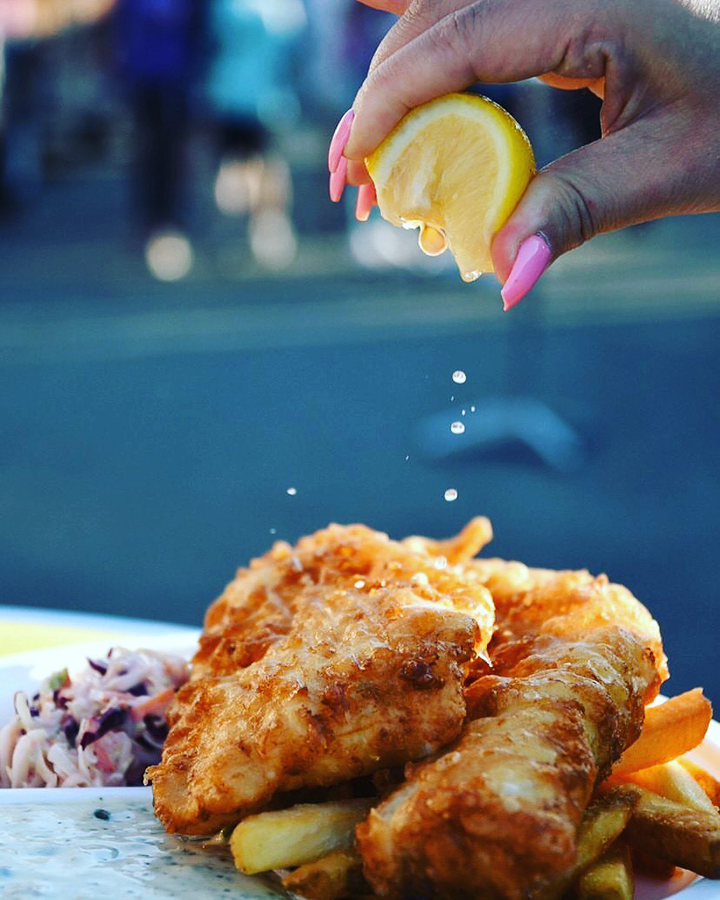
Beer battered lingcod and chips from Mama’s Fish and Chips. Photo courtesy Oceanwise Seafood Festival
By encouraging consumers to eat a wider variety of seafood, chefs can also help keep fish supplies healthy. On today’s menus, the most common types of seafood are salmon, cod, and tuna, which can lead to these species being overfished, and over-menued.
One way to encourage menu diversity is by using local, seasonal seafood. While diners may be hungry for specific types of seafood, it’s the responsibility of the chef to ensure the menu stays sustainable, even if that means it is not always meeting demand.
“The best way to incorporate seafood on catering menus is to choose seafood that is seasonal, and keep the ‘fresh catch’ verbiage on the menus. [This allows] us to use what is in season and what will be available during the time of year that the function is being held,” says Chef Nick Klug (Vice President of Culinary, Sports & Entertainment for Atlanta’s Proof of the Pudding), who uses sustainable Albacore tuna, locally caught stone crabs, and redfish, as well as sustainably farmed oysters within his kitchen.
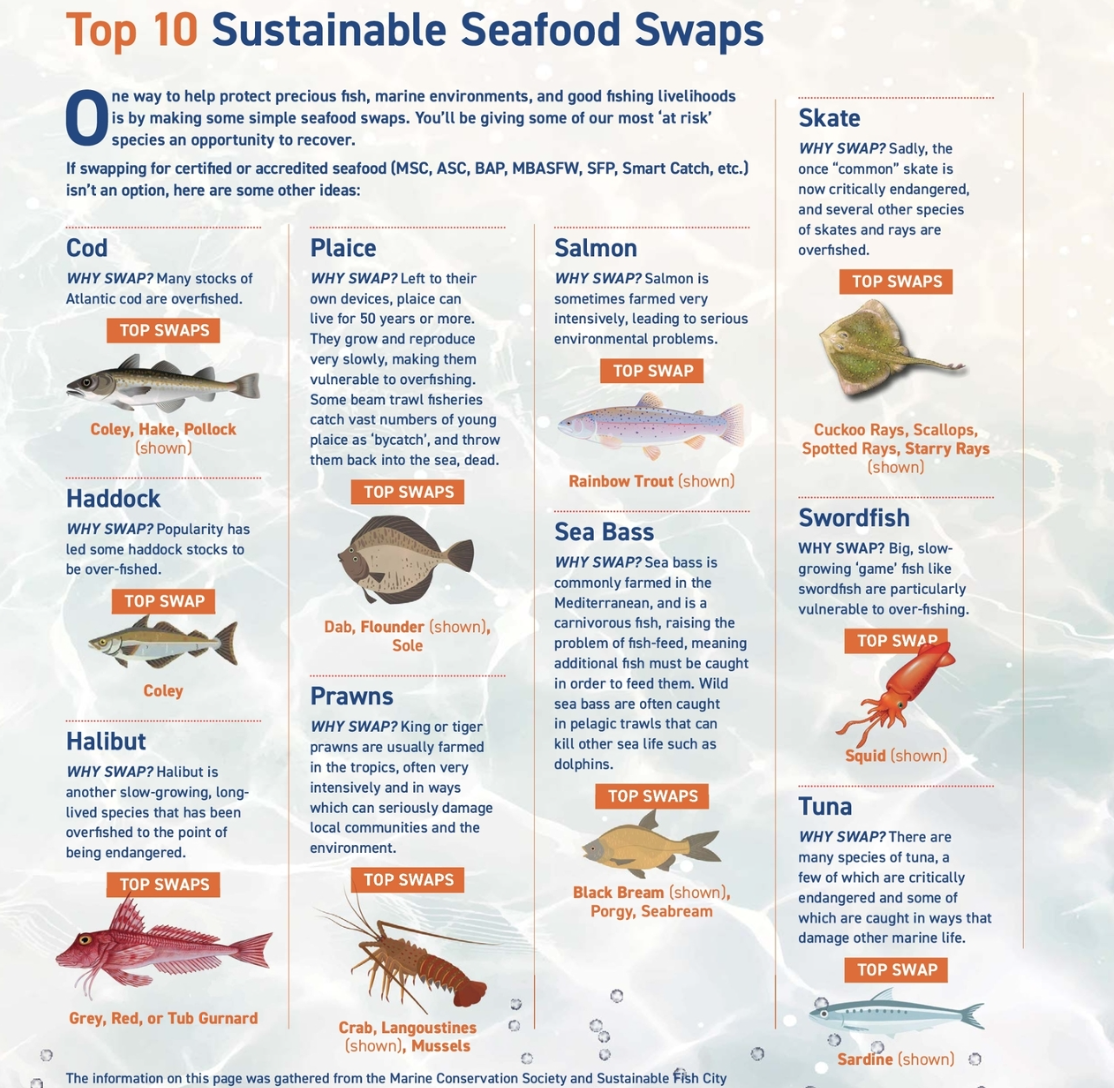
Sustainable seafood can also be so much more than fish, such as seaweed (for salads and garnishes) and saltwater (for cocktails).
“We can take plant-forward underwater,” said Vincent Doumeizel (Vice President, Food, Beverage and Sustainability, Lloyd’s Register; editor, Seaweed Revolution: A Manifesto for a Sustainable Future) during the Menus of Change event 2021. “We need to be the first generation to really understand how to use the ocean because it’s one of the greatest untapped resources on the planet.”
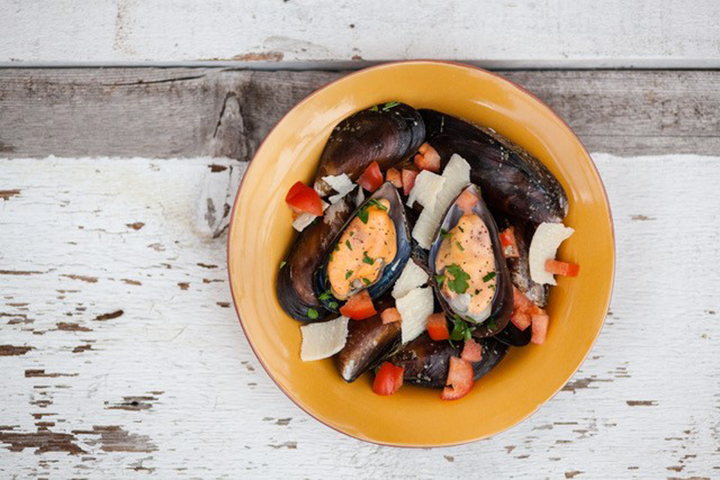
Honey Mussels™ (from Sailors Seafoods) have a distinct sweet-smoky flavor, which is balanced with an enjoyable tender and plump texture. The Honey Mussel shell comes in a range of colors, from deep golden to dark brown. This is a natural characteristic and adds variety to any plate.
Photo courtesy Oceanwise Seafood Festival
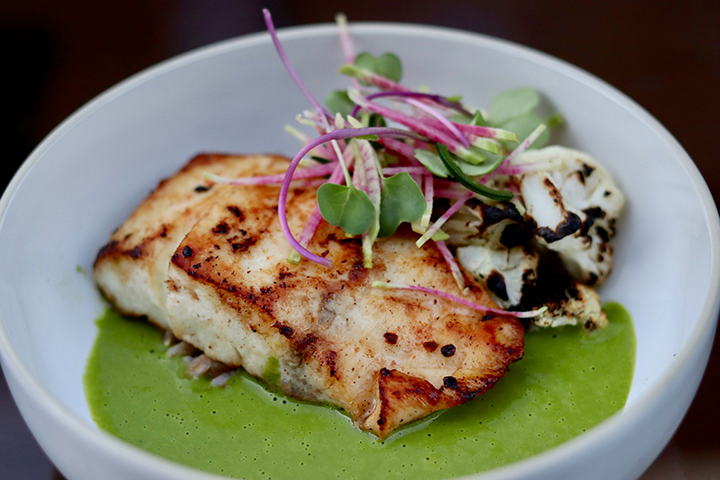
Seared Red Fish with Herb and Green Chile Vinaigrette, Farro, Charred Cauliflower, Lime, Herb-Radish Salad. Photo courtesy Proof of the Pudding
Most importantly, sustainable seafood also allows chefs to get creative in their kitchens by utilizing different ingredients. For example, chefs can look to locally-caught Pacific Grenadier (a common bycatch of black cod) as a substitute for tilapia, but with more flavor and texture.
“We’re really just touching the surface of the water,” says Gary Patters, Executive Chef & Culinary Development Director for McCormick for Chefs (which listed seafood as one of 2022’s top culinary trends). “There’s so much below that adds flavor, adds creativity, adds color.”
From fin to gill
Another way chefs can be sustainable in the kitchen is by using the whole fish.
Much like the “nose to tail” movement, the “fin to gill” concept finds innovative and creative ways to reduce waste in the kitchen, thus lessening the number of fish that need to be caught.
“Part of being sustainable is to use as much of the fish as I possibly can,” said Chef Mark Allison of Forever Oceans during a recent webinar on sustainable seafood for Nation’s Restaurant News.

Wild Salmon Hand Pie: decadent cream cheese, spinach, artichoke, and wild sockeye salmon are mixed and encased in a handheld, buttery puff pastry shell from Intercity Packers. Photo courtesy Oceanwise Seafood Festival
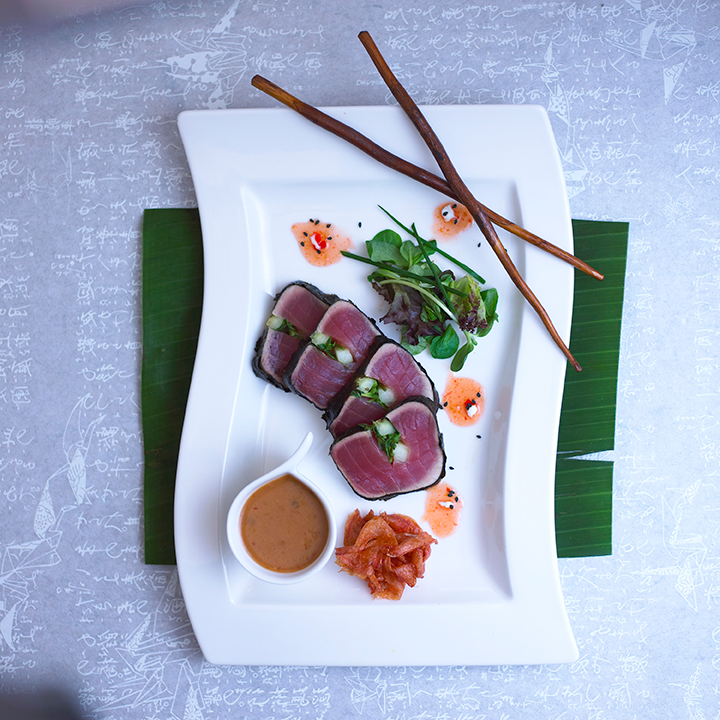
Radish-Herb Stuffed Tuna, House Kimchi, Thai Vinaigrette, Black Sesame, Herb Salad. Photo courtesy Proof of the Pudding
Here are some ideas for using a whole fish:
Head: Dense in flavor and hidden meat, utilized often in global cuisine recipesRecipe inspiration
Recipe inspiration:
- Fish Tacos with Yellowtail
- Can be added to soup, or it can be split, butterflied, and grilled
Loin: Great for grilling, searing, or sliced raw
Recipe inspiration:
Collar: Grilled, roasted, or smoked, a highly flavored treat
Recipe inspiration:
Tail: Grilled or seared, a versatile portion size
Recipe inspiration:
- Kahala with jicama salad
- Deep-fry the salmon tail
Belly: Rich in fat, excellent for poke or ceviche
Recipe inspiration
- Yellowtail poke
- Stuff salmon belly with crab and bake it in white wine
- Poached salmon rillettes using salmon belly trim
Other ideas, according to fishmonger Tommy Gomes for how to use an entire Alaska salmon:
- After you fillet the fish, you can scrape the carcass clean and make a tartare or a burger
- Keep the meat on the ribs and sauté the ribs as a dish
- Use the carcass to make fish stock
- Smoke or barbecue the tongue
- Use the fins to make grilled salmon wings with teriyaki and yuzu ponzu
“Through sourcing sustainable seafood and putting that on our menu and telling that story, we as chefs can contribute to the cause of having a healthy ocean,” said Chef Sammy Monsour of Preux & Proper out of Los Angeles during a James Beard Foundation webinar on its sustainable seafood rating program Smart Catch, which is overseen by Postelsia. “This topic is really as vast as the ocean.”
In closing, when cooking with sustainable seafood, there really is no wrong way to do it.
Hook. Line. And sinker.
Editor’s note: The publication, Nation’s Restaurant News, is owned and operated by Informa Connect, Catersource’s parent company.
Check back on Friday for some sustainable seafood inspiration.



